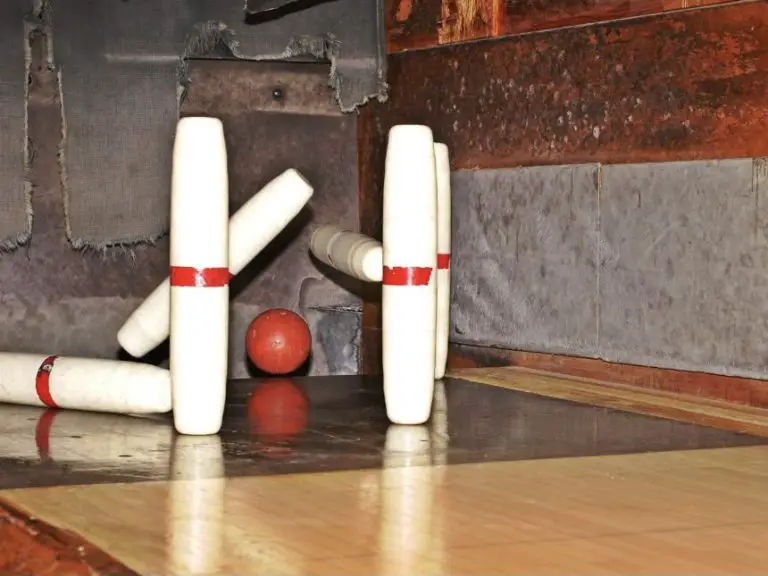Does Candlepin Bowling Have a Professional League?
Candlepin bowling has gained popularity in New England and the Canadian Maritime provinces, but many people wonder if it has a professional league. Unlike traditional bowling, which has a well-established professional league, candlepin bowling does not have a single, unified professional league.
However, there are several professional candlepin bowling organizations that host tournaments and events throughout the year. These include the International Candlepin Bowling Association (ICBA) and the Pro Candlepin Bowlers Tour (PCBT).
Candlepin bowling is a popular sport that originated in Massachusetts in the late 19th century. It is a variation of bowling that uses thinner pins and smaller balls, making it more challenging than traditional ten-pin bowling. In candlepin bowling, the pins are arranged in a triangular shape at the end of the lane, and the objective is to knock down as many pins as possible with three balls per frame.
Key Takeaways
- Candlepin bowling is a variation of bowling that originated in Massachusetts in the late 19th century.
- Unlike traditional bowling, candlepin bowling does not have a single, unified professional league.
- However, there are several professional candlepin bowling organizations that host tournaments and events throughout the year.
Candlepin Bowling Basics
Candlepin bowling is a variation of bowling that is primarily played in the Canadian Maritime provinces and the New England region of the United States. It is a challenging and exciting game that requires skill and precision. In this section, we will cover the basics of candlepin bowling, including equipment and lane specifications, rules of the game, and scoring and gameplay.
Equipment and Lane Specifications
Candlepin bowling uses ten tapered pins that are 15 inches tall and have a diameter of 1.5 inches at their widest point. The bowling ball used in candlepin bowling is smaller than the one used in ten-pin bowling, weighing between 2 and 3 pounds and measuring 4.5 inches in diameter. Unlike ten-pin bowling balls, candlepin bowling balls do not have finger holes.
The lane used in candlepin bowling is 41 inches wide and 60 feet long, with a foul line 10 inches from the headpin. The lane is made of wood and has a ball return system that brings the ball back to the player after each roll.
Rules of the Game
Candlepin bowling is played in ten frames, with each frame consisting of three rolls per frame. The objective of the game is to knock down as many pins as possible in each frame. If all ten pins are knocked down with the first ball, it is called a strike. If all ten pins are knocked down with two balls, it is called a spare.
The player with the highest score at the end of ten frames wins the game. In case of a tie, a roll-off is played to determine the winner.
Scoring and Gameplay
In candlepin bowling, each pin knocked down is worth one point. If a player knocks down all ten pins with their first ball, they receive ten points plus a bonus for their next two rolls. If they knock down all ten pins with their second ball, they receive ten points plus a bonus for their next roll.
If a player knocks down some, but not all, of the pins with their first or second ball, they receive one point for each pin knocked down. If they knock down the remaining pins with their third ball, they receive a spare and earn the same number of points as if they had knocked down all ten pins with their second ball.
Overall, candlepin bowling is a challenging and exciting game that requires skill, precision, and a bit of luck. With its unique equipment and scoring system, it offers a fun and engaging experience for players of all skill levels.
Professional Candlepin Bowling
Candlepin bowling is a popular sport in New England, and many people wonder if there is a professional league for this unique variation of bowling. The answer is yes, there is a professional league for candlepin bowling, and it is governed by the International Candlepin Bowling Association (ICBA).
International Candlepin Bowling Association
The ICBA is the governing body for professional candlepin bowling, and it oversees all major tournaments and championships. The organization was founded in 1969, and it is responsible for setting the standards for the sport, including rules and regulations, equipment specifications, and tournament formats.
Major Tournaments and Championships
There are several major tournaments and championships in professional candlepin bowling, including the World Candlepin Bowling Championship, the ICBA National Championship, and the Eastern Classic. These tournaments attract the best players from around the world, and they offer substantial prize money to the winners.
Famous Candlepin Bowlers and Records
Over the years, there have been many famous candlepin bowlers who have made a name for themselves in the sport. Some of the best players include Ralph Semb, Don Richmond, and Chris Sargent. The highest recorded score in candlepin bowling is 245, which has been achieved by two men according to the ICBA.
The National Duckpin and Candlepin Congress (NDCC) also governs candlepin bowling in the United States, and it is responsible for maintaining records and setting standards for the sport. The highest score in the NDCC is 279, which was achieved by a bowler in 1984.
In summary, professional candlepin bowling is a thriving sport that is governed by the ICBA and the NDCC. There are many major tournaments and championships, and there have been many famous candlepin bowlers who have achieved remarkable records and scores.
Comparing Candlepin to Other Bowling Variants
Candlepin vs Ten-Pin Bowling
Candlepin and ten-pin bowling are two popular bowling variations that have a few key differences. The most obvious difference is the number of pins used in each game. In ten-pin bowling, players knock down ten pins, while in candlepin bowling, they knock down just nine. However, the pins in candlepin bowling are thinner and have a smaller diameter than those in ten-pin bowling. This makes it harder to knock them down, and it requires more precision and skill to aim for them.
Another difference between the two games is the number of balls used in each game. In ten-pin bowling, players get two balls per frame, while in candlepin bowling, they get three. This means that candlepin bowling requires more stamina and endurance, as players have to roll more balls.
Candlepin and Duckpin Bowling Differences
Candlepin and duckpin bowling are two variations of bowling that are similar in some ways but different in others. One of the main differences between the two games is the size of the ball used. In candlepin bowling, players use a smaller ball that weighs up to 3 pounds and doesn’t have finger holes. In duckpin bowling, players use an even smaller ball that weighs just 1-3/4 pounds and has finger holes.
Another difference between the two games is the shape of the pins. In candlepin bowling, the pins are narrow and cylindrical, while in duckpin bowling, they are triangular in shape. This makes it harder to knock down the pins in candlepin bowling, as they bounce more when hit. In duckpin bowling, the pins are smaller, and it’s easier to knock them down.
Both games have a gutter on either side of the lane, and players have to aim carefully to avoid it. However, in candlepin bowling, the gutter is wider, which makes it harder to keep the ball on the lane.
Overall, while there are differences between candlepin bowling, ten-pin bowling, and duckpin bowling, they all share the same basic goal: to knock down as many pins as possible with each roll. Each game requires its own unique strategy and skillset, but they all offer a fun and exciting way to enjoy the sport of bowling.


